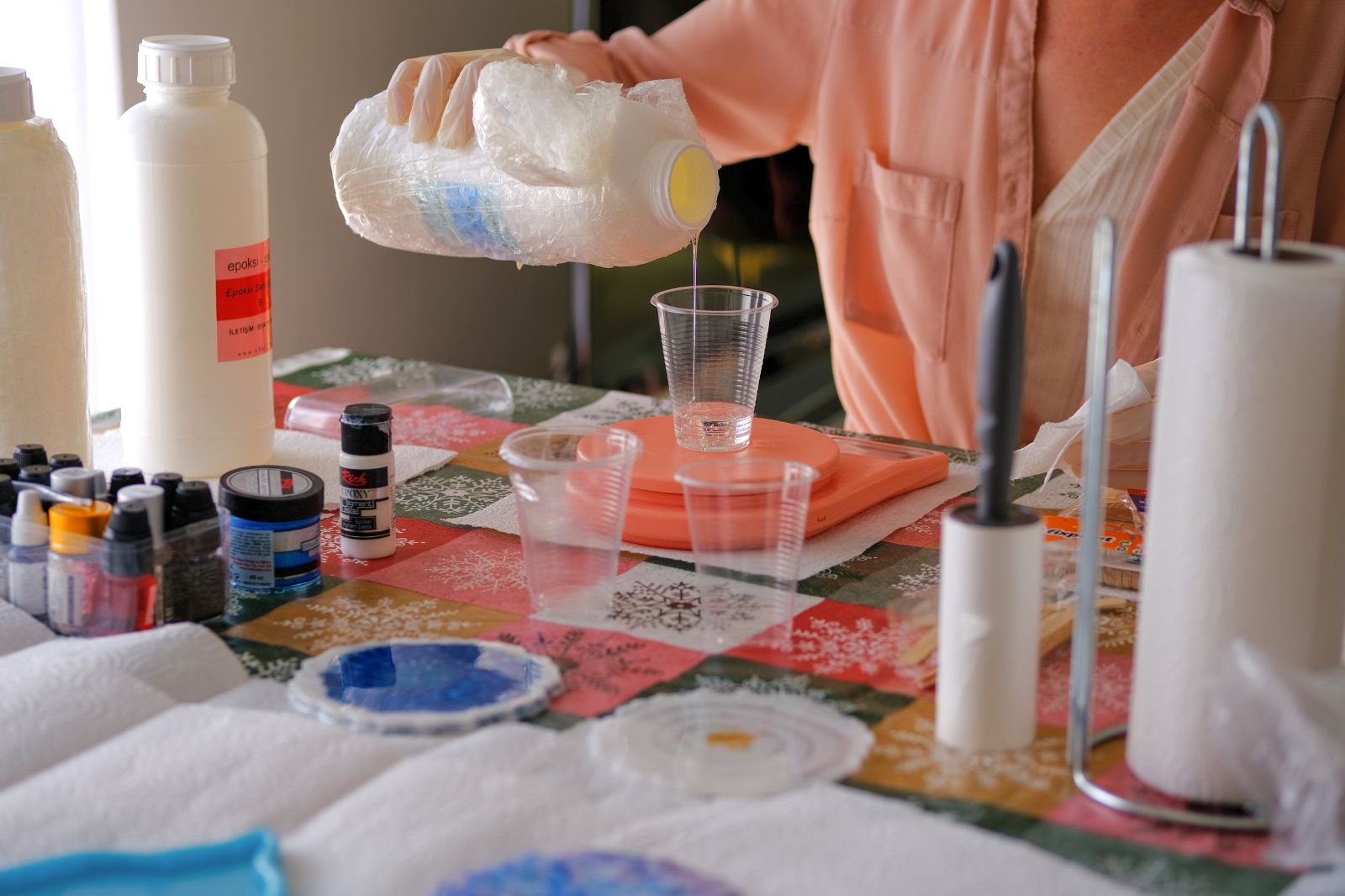Can I Use Mod Podge on Wood? A Guide to Topcoats/Sealants

When it comes to finishing your craft projects, the right topcoat or sealant can make all the difference. Whether you’re working with wood, ceramics, or paper, applying a topcoat or sealant helps protect the finished surface of your creation. A good sealant also enhances the appearance and extends the life of the work. This guide aims to simplify your decision-making process by exploring the different types of topcoats and sealants and tips for achieving the best results.
Understanding Topcoats and Sealants
- Topcoats: These are protective layers applied over a finished craft project to enhance its appearance and durability. Topcoats can add shine, matte finishes, or texture to your work, and they often provide a layer of protection against environmental factors like moisture, UV light, and general wear and tear.
- Sealants: Sealants, on the other hand, are primarily used to lock in and protect the underlying material. They are often used to seal porous surfaces, prevent staining, and provide a barrier against elements such as water and dust. Sealants are crucial for ensuring that the base material remains intact and unaffected by external conditions.
Types of Topcoats
- Glossy Finish Topcoats
- Characteristics: Glossy topcoats provide a shiny, reflective finish that enhances colors and details.
- Best For: Glossy finishes are ideal for art pieces, decorative objects, and any project where a high shine is desired.
- Examples: Acrylic gloss varnish, polyurethane gloss finish.
- Matte Finish Topcoats
- Characteristics: Matte topcoats offer a non-reflective, smooth finish that reduces glare and highlights the natural texture of the material.
- Best For: Matte finishes work well for projects when you need a subtle, elegant look.
- Examples: Matte acrylic varnish, matte polyurethane.
- Satin Finish Topcoats
- Characteristics: Satin topcoats provide a soft sheen that sits between glossy and matte finishes. They offer a balanced look with a slight luster.
- Best For: Satin finishes are versatile and can be used for a variety of projects, including home decor and functional items.
- Examples: Satin acrylic varnish, satin polyurethane.
- Textured Topcoats
- Characteristics: Textured topcoats add dimension and tactile qualities to surfaces, creating effects such as rough, bumpy, or embossed finishes.
- Best For: Textured finishes are great for adding unique surface details and visual interest to crafts and mixed media projects.
- Examples: Textured acrylic gel medium, crackle medium.
Types of Sealants
- Acrylic Sealants
- Characteristics: Acrylic sealants are water-based, quick-drying, and non-toxic. They offer a clear, flexible finish that can protect a variety of surfaces.
- Best For: Acrylic sealants are suitable for sealing artwork, paper crafts, and textiles. They work well with painted surfaces and offer moderate protection.
- Examples: Acrylic sealer spray, acrylic brush-on sealant.
- Polyurethane Sealants
- Characteristics: Polyurethane sealants provide a durable, waterproof coating that resists abrasion and chemicals. They come in both oil-based and water-based formulations.
- Best For: Polyurethane sealants are ideal for sealing wood, metal, and high-traffic areas where extra protection is needed.
- Examples: Polyurethane spray, polyurethane brush-on sealant.
- Epoxy Sealants
- Characteristics: Epoxy sealants offer a strong, long-lasting protective layer that is resistant to moisture, chemicals, and heat.
- Best For: Epoxy sealants are best for projects requiring heavy-duty protection, such as outdoor furniture, countertops, and ceramic tiles.
- Examples: Epoxy resin, epoxy clear coat.
- Mod Podge
- Characteristics: Mod Podge is a popular all-in-one glue, sealer, and finish that comes in various finishes including gloss, matte, and satin.
- Best For: Mod Podge is ideal for decoupage projects, paper crafts, and light sealing needs. Technically, you could use it on wood (to answer the title question) but if you need something more heavy duty it’s better to use a different sealant. Mod Podge provides a versatile finish for most projects though.
- Examples: Mod Podge gloss, Mod Podge matte.
Application Tips
- Surface Preparation: Always ensure your surface is clean, dry, and free from dust before applying any topcoat or sealant. Proper preparation helps the coating adhere better.
- Application Method: Choose the application method that suits your project—brush, spray, or sponge. Each method has its benefits and can affect the final appearance. For instance, spraying can provide an even coat, while brushing might allow for more control over detailed work. It’s important to note you may need to be more cautious with certain sealants/topcoats. Work in open spaces and wear protective gear when it’s appropriate. Always follow the manufacturer’s guidelines.
- Drying Time: Follow the manufacturer’s instructions regarding drying and curing times. Allow adequate time for the coat or sealant to fully dry to ensure optimal protection and finish.
- Test First: It’s always a good idea to test the topcoat or sealant on a small, inconspicuous area or a sample piece to see how it interacts with your material and to check for any undesirable effects.
Conclusion
Choosing the right top coat or sealant for your craft project can significantly impact its final appearance. By understanding the different types available and how they apply to various materials, you can make an informed decision that will enhance and protect your work. Whether you’re aiming for a glossy finish, a matte look, or more robust protection, this guide will help you select the best products for your crafting needs!
Trusted Insights from Artists
At Art Life Today, our passion for arts and crafts is at the heart of everything we do. We understand that the right tools and materials can make all the difference in your creative projects, so we take our responsibility as reviewers seriously. Our goal is to help you discover the best products that will inspire your creativity and bring your artistic visions to life.